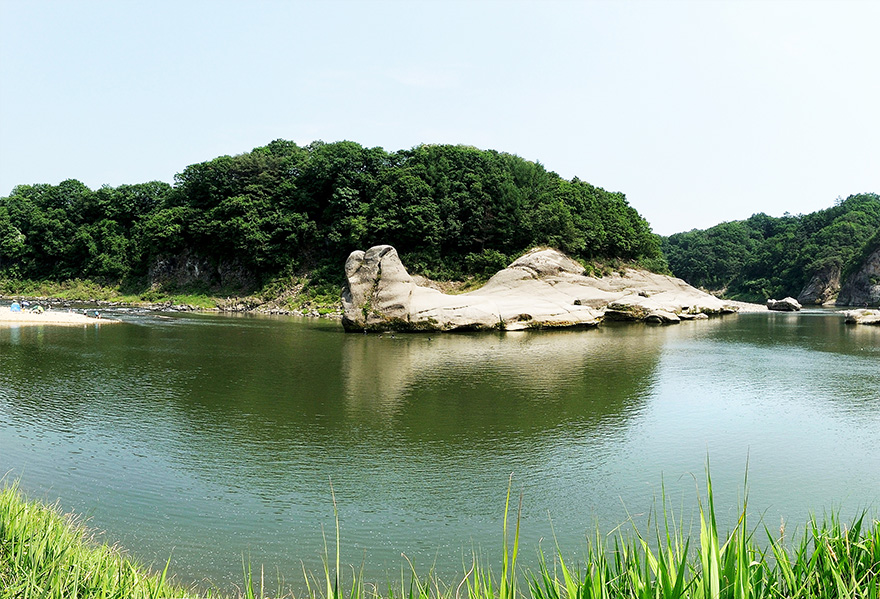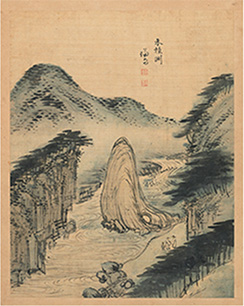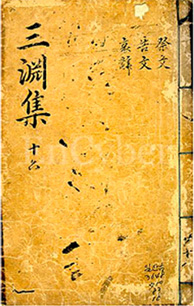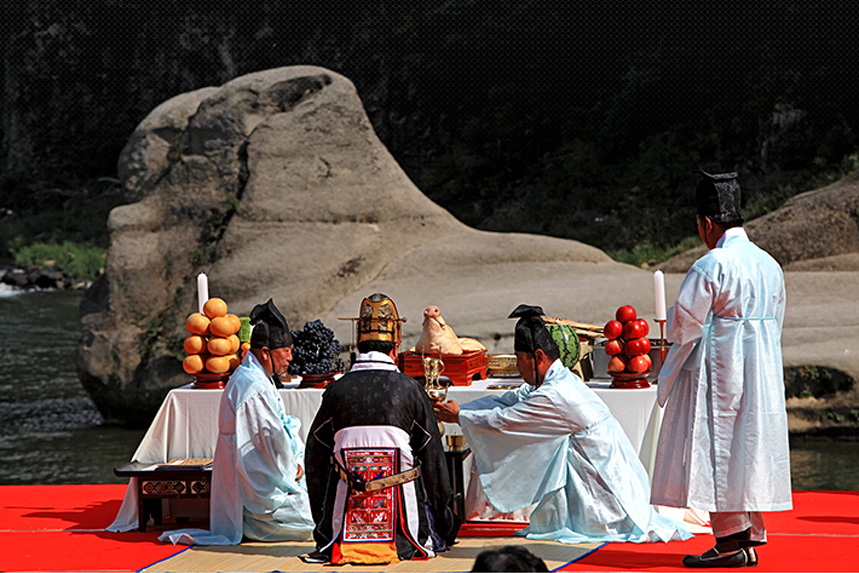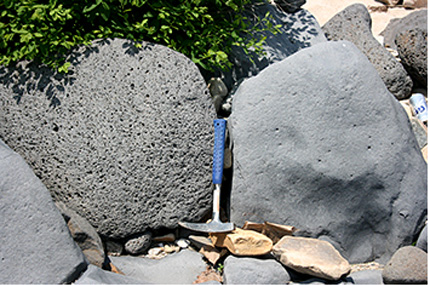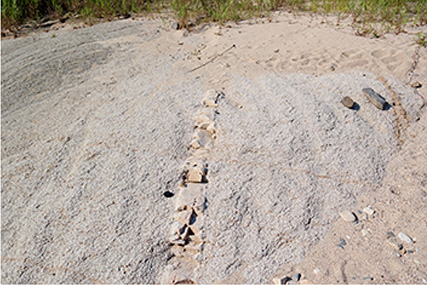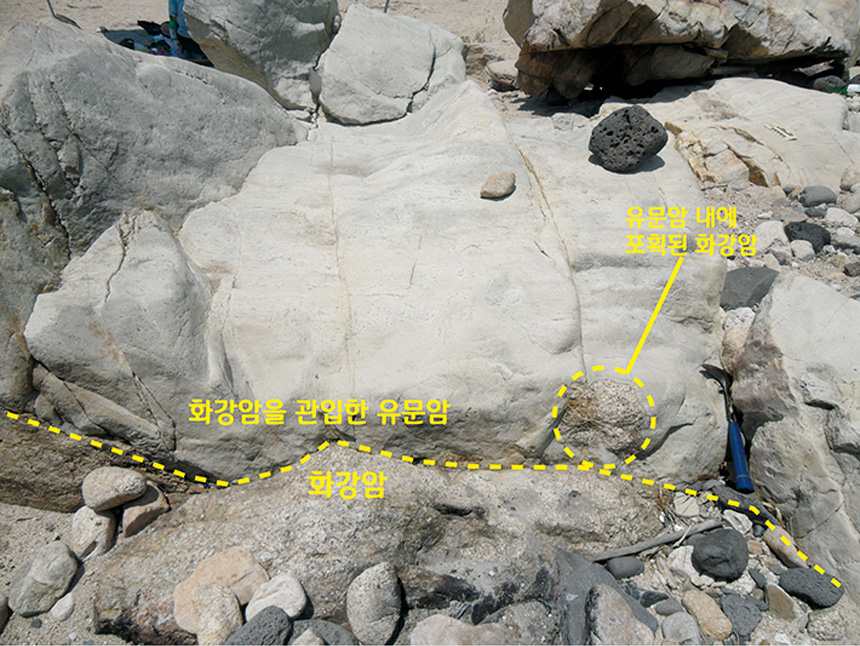<samyeonjip>-Samyeon Kim Chang-heup’s garland
High rock soaring there, cliff where a hawk is resting A twirling bend in a river is so black and it is pond where a dragon lies flat. Great harmony, you used all your energy to hang and soar Answered if you pray during a drought and suddenly clouds wrap the rocks Autumn grain piled up like a mountain in the Dongju plain
